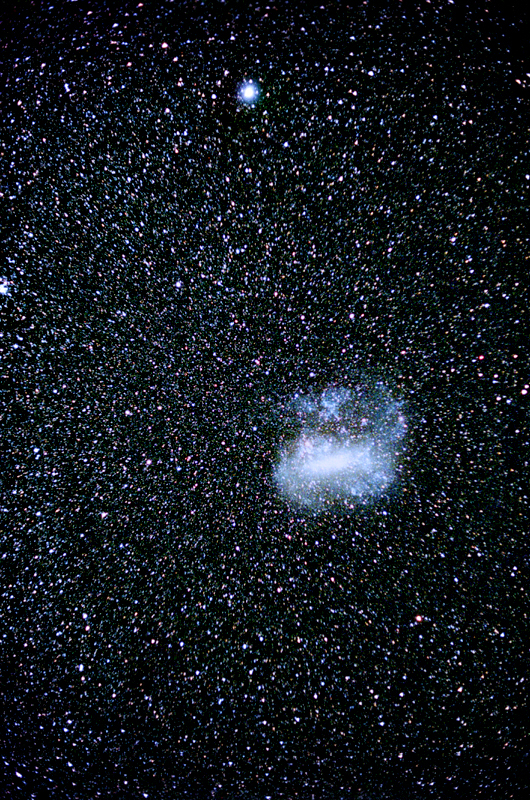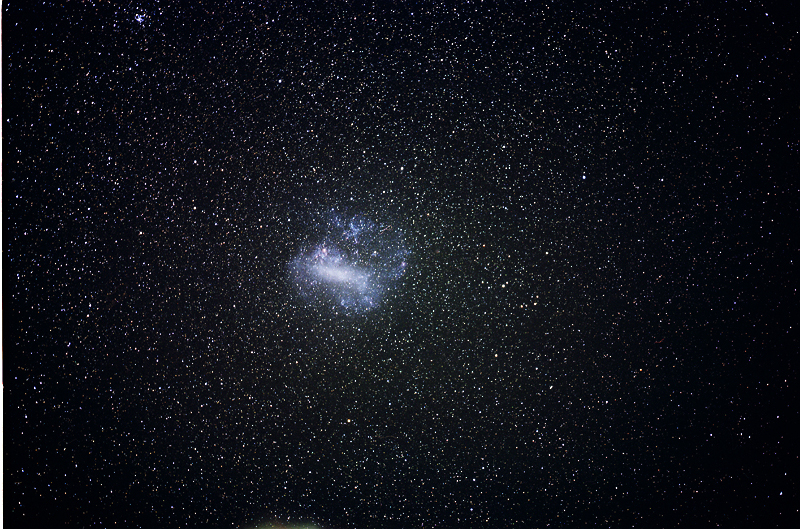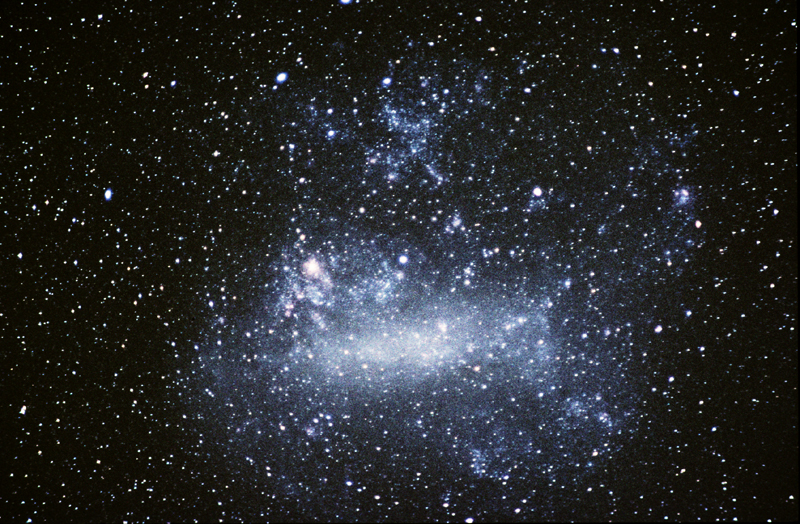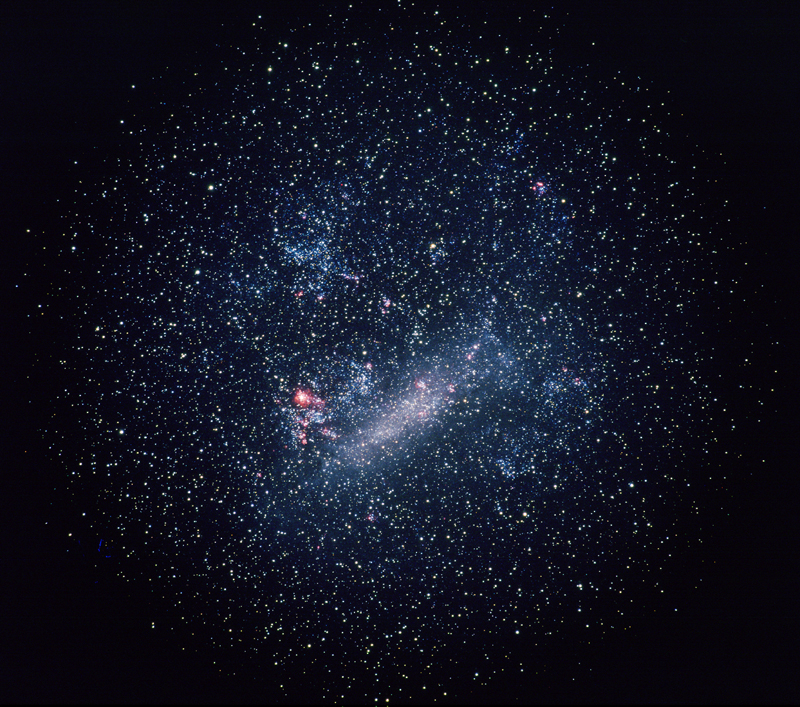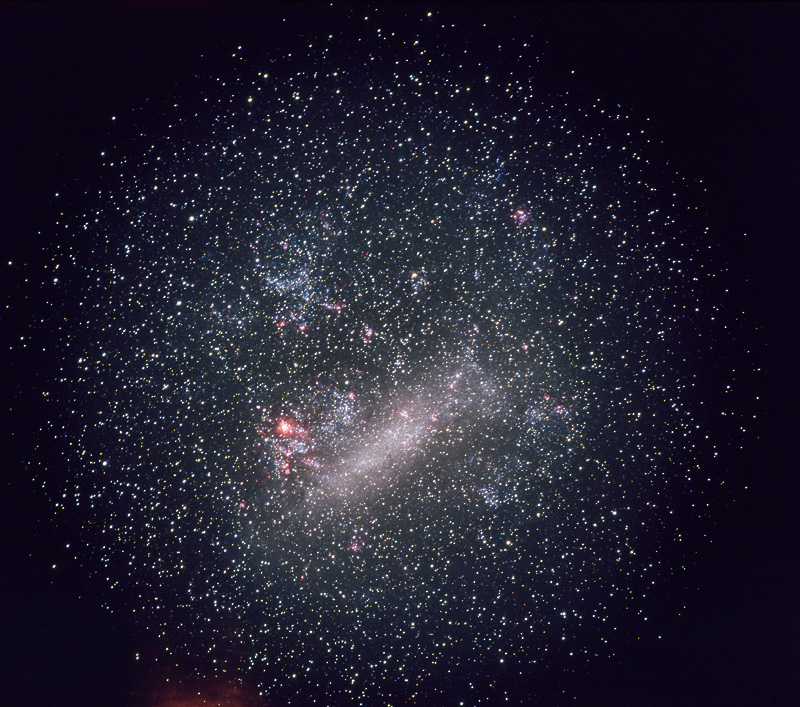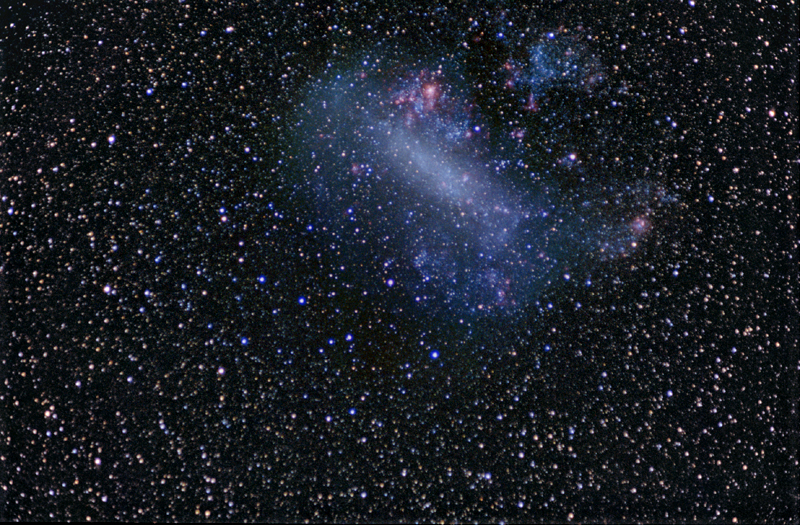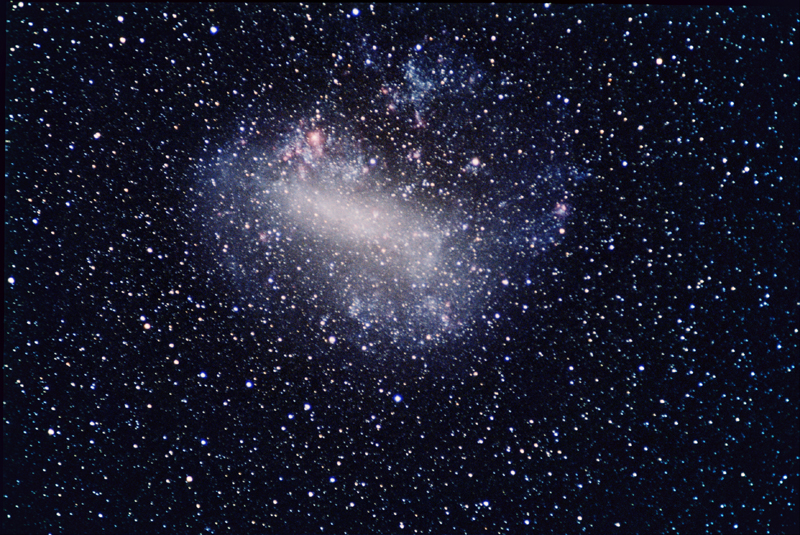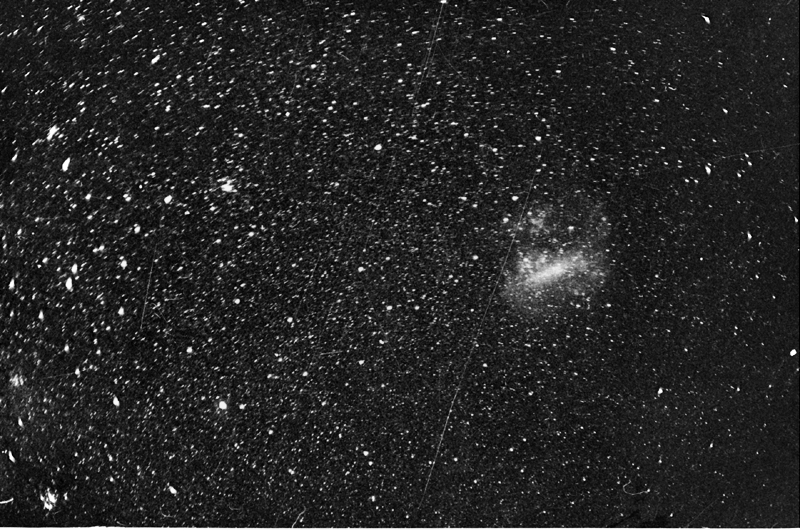
30 minutes exposure, Kodak Tri-X film.
50mm f/2 Nikkormat lens.

One of my first attempts at astrophotography, back in 1972. In those days, Tri-X reigned supreme as colour film was too expensive for most imagers. I was even very happy to record a satellite trail in the image. Today they are a pain! The digital revolution certainly has changed astrophotography!!!!!!!!!!!!!!!!
Occassionally after payday there was enough left over to splash out on a roll of colour film. The film of choise was at first, High Speed Ektachrome, (High speed being 160 ASA!!!) then in the mid-1970's came Ektachrome 400, probably the best colour film for astrophotography.
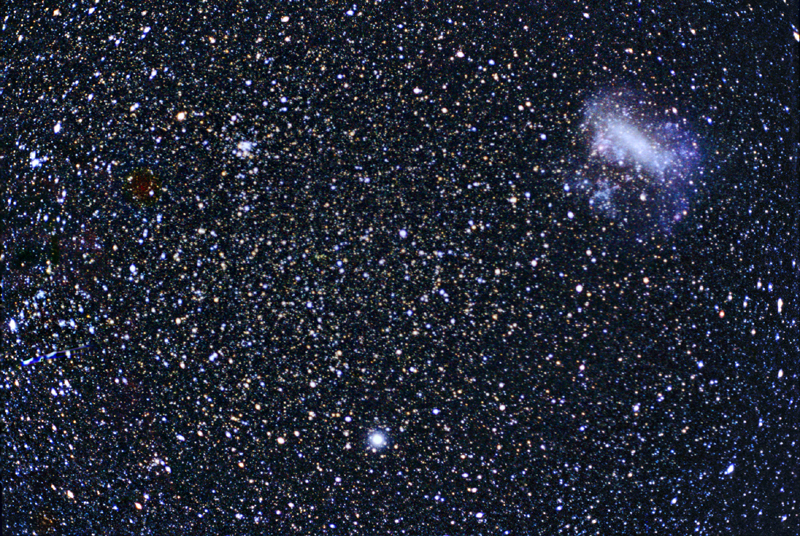
The bright star just below centre is Canopus, the second brightest star in the sky. To the upper left of centre is the beautiful open cluster NGC 2516.
